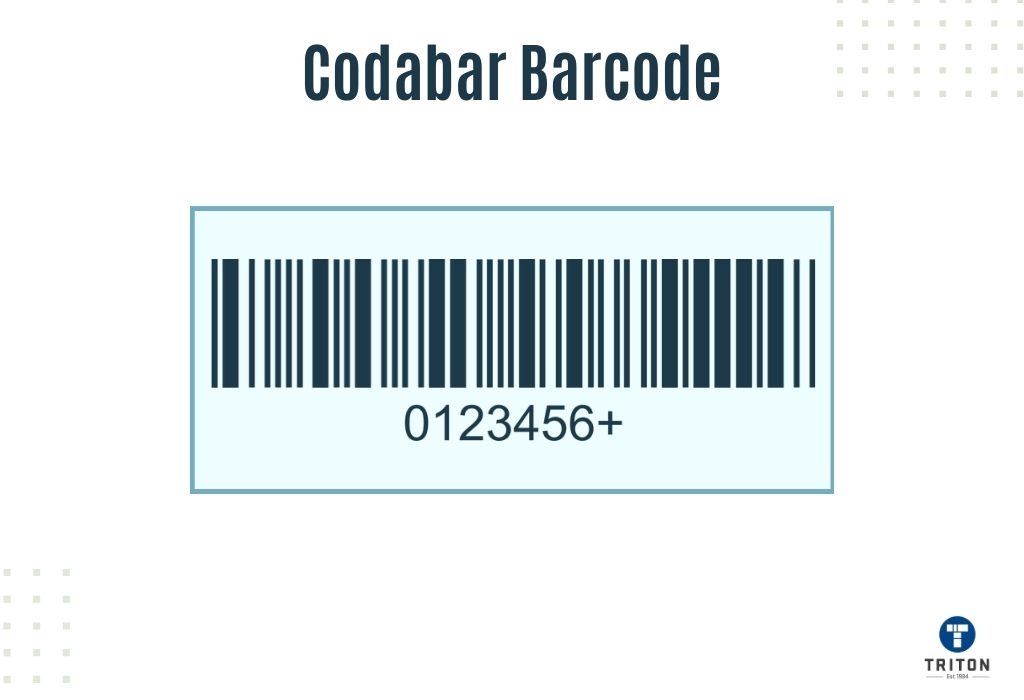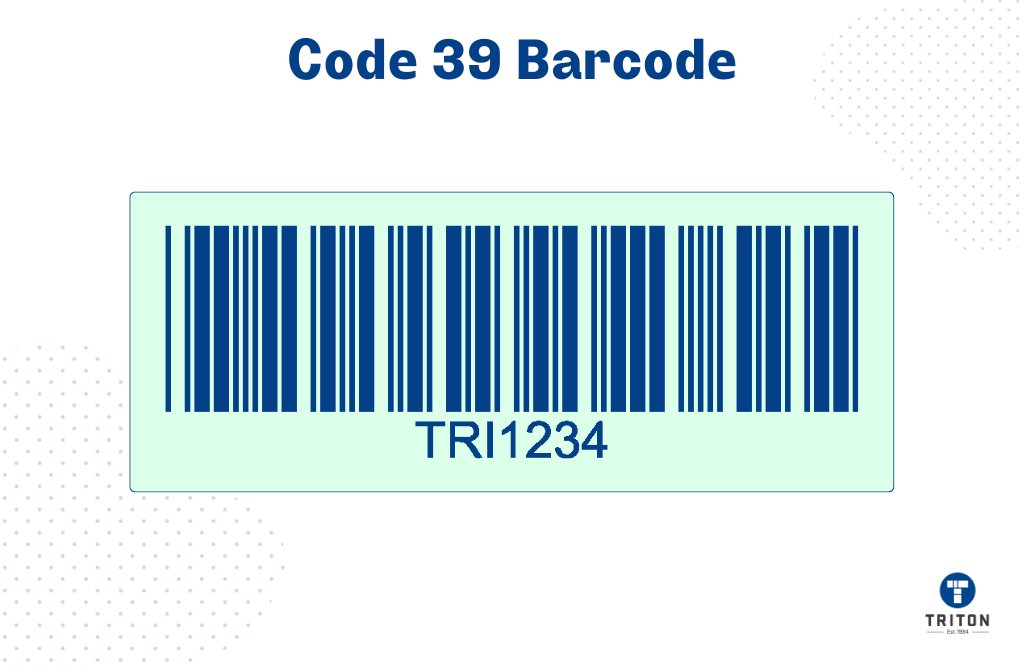
Codabar and Code 39 stand as two prominent barcode symbologies, each with its distinct characteristics and applications. As the demand for efficient data capture and inventory management grows, the choice between these two systems becomes increasingly significant. This article offers a detailed comparison between Codabar and Code 39, highlighting their strengths, limitations, and ideal use cases.
To delve deeper into the realm of barcoding technology, we invite you to visit our extensive Barcode Learning Center. Here, you’ll discover a treasure trove of information, valuable resources, and insightful content that will enrich your knowledge of this indispensable barcoding technology.
Invented in 1974 by Dr. David Allais and Ray Stevens of Intermec, Code 39 was initially designed with 40 possible characters. One was set aside for start and stop patterns, leaving 39, which gave the barcode its name. It was later standardised as ANSI MH 10.8 M-1983 and MIL-STD-1189.
Codabar was created in 1972 by Pitney Bowes, initially for retail and logistics applications. Unlike Code 39, it was not designed with a broad character set, focusing on numeric data and a few special characters. It gained traction for its simplicity and ease of printing.

Codabar is a liner barcode symbology primarily designed for retail and logistics. It also focuses on encoding numeric data and a limited set of special characters. Known for its simplicity and ease of printing, Codabar has found applications in libraries, blood banks, and air parcel services. It distinguishes itself with different start and stop characters, enhancing its reliability in data capture.
Refer to our dedicated article on what is Codabar to learn more.

Code 39 is a versatile linear barcode symbology that allows the encoding of 43 characters, including uppercase alphabets, numbers, and special characters. It is defined in ISO/IEC 16388:2007 and is known for its variable length and discrete structure.
Unique features include the absence of a mandatory check digit and the use of a single character for both start and stop delimiters. Widely adopted across industries, it is compatible with virtually any barcode reader and is easily integrated into existing systems.
Refer to our dedicated article on what is Code 39 to learn more.
Code 39 barcode is frequently mistaken for the Code 128 barcode, despite their distinct differences. Our dedicated article, “Code 39 vs Code 128,” will help dispel any confusion and provide you with a clear understanding of their differences.

Criteria | Code 39 | Codabar |
|---|---|---|
Character Set
| Broad (Uppercase alphabets, numbers, special characters)
| Limited (Numbers and a few special characters)
|
Data Density
| Lower (Requires more space for the same data)
| Higher (More data in less space)
|
Error Checking
| Self-checking (Single erroneous bar can’t generate another valid character)
| Relies on start and stop characters
|
Start/Stop Characters
| Same character (‘*’) for both start and stop
| Different start and stop characters
|
Let us now go through the differences in greater detail.
Code 39 has a more expansive character set than Codabar, allowing for encoding uppercase alphabets in addition to numbers and special characters.
Code 39 can encode numbers 0 to 9, uppercase letters A to Z and special characters, including -, ., $, /, +, %, and space (“). On the other hand, Codabar can encode numeric digits ranging from 0-9 and five special characters, including plus (+), minus (-), forward slash (/), colon (:), dollar symbol ($), and dot (.)
This makes Code 39 more versatile for applications that require a broader range of data representation, such as asset tagging and industrial labelling.
If you’re keen on diving deeper into asset tagging, check out the following guides:
Code 39 has a lower data density than Codabar, requiring more space to encode the same amount of data. This makes Codabar more suitable for labelling smaller items where space is at a premium, such as laboratory samples or small retail products.
While neither symbology mandates a check digit, Code 39 is often considered self-checking because a single erroneously interpreted bar cannot generate another valid character.
On the other hand, Codabar relies more on the accuracy of its start and stop characters for data integrity, making its error-checking mechanisms less robust.
Code 39 uses the same character (‘*’) for both start and stop delimiters, simplifying its structure.
Codabar utilises different start and stop characters, allowing for more reliable data capture but adding a layer of complexity to its encoding process.

Both Codabar and Code 39 can encode numeric data and a limited set of special characters.
While Code 39 has a broader character set that includes uppercase alphabets, both symbologies are well-suited for applications that require encoding numbers, dashes, and other simple symbols. This makes them versatile choices for a range of industries.
Codabar and Code 39 have found applications across multiple sectors. They are commonly used in healthcare for patient identification and sample labelling, in retail for inventory tracking, and logistics for package sorting. Their widespread adoption is a testament to their reliability and versatility.
Neither Codabar nor Code 39 mandates using a check digit for validation, although both offer it as an optional feature. This simplifies the encoding process and allows for easier integration into existing systems.
The absence of a compulsory check digit makes both symbologies more straightforward to implement.
Both Codabar and Code 39 barcodes can be read by most standard barcode scanners, making them highly accessible. Their design allows for reliable data capture, even in environments where quick scanning is essential. This universal readability ensures they can seamlessly incorporate into various operational workflows.
Navigating the world of barcode solutions can be daunting, but with Triton, you’re in expert hands. We pride ourselves on offering an elite selection of barcode scanners featuring trusted names like Honeywell and Zebra.
Our extensive catalogue includes mobile terminals, general-purpose barcode scanners, rugged barcode scanners, fixed scanners & sensors, USB barcode scanners, wireless barcode scanners, 2D barcode scanners, and Bluetooth barcode scanners.
Yet, our dedication to your barcode needs doesn’t end with scanners. We’ve also handpicked a range of indispensable barcode scanner accessories and, spare parts, and scanner cables, ensuring the uninterrupted, top-tier performance of your equipment.
Every offering from Triton is a blend of innovation and reliability designed to cater to your unique requirements. Whether you’re gearing up for a one-off purchase or planning a large-scale integration, Triton promises a seamless journey to your ideal barcode solution.
Need guidance? – no worries!
Our experts are available via the live chat widget below, ready to steer you towards the perfect solution tailored to your needs.
If your business requires a barcode system that can encode a wide range of characters, including alphabets, and you’re looking for a symbology easily integrated into existing systems, Code 39 is the ideal choice. Its versatility and broad character set make it suitable for diverse applications, from industrial labelling to asset management.
On the other hand, if you’re in an industry where space is a constraint and you primarily need to encode numeric data, Codabar is the more efficient option. Its higher data density makes it ideal for labelling small items, and its simplicity ensures quick and reliable data capture.
Our article on how to choose the correct barcode type will come in handy.
If you’re seeking a dependable barcode generator with label design and printing capabilities, we highly recommend Seagull Scientific’s BarTender Software.
At Triton Store, we proudly offer BarTender software at unbeatable prices, providing access to all editions, including Starter Edition, Professional Edition, Automation Edition and Enterprise Edition, along with the latest addition, BarTender Cloud, tailored to your specific needs.
Investing in a premium barcode generator like BarTender Software ensures you gain access to unmatched flexibility, security, and support, streamlining the process of efficient and effective barcode creation.
To explore how BarTender Software can revolutionise your label printing experience, please visit our article Understanding BarTender Software or reach out to us through the live chat widget below.
Navigating the choice between Code 39 and Codabar is a strategic decision that hinges on your unique business requirements. Whether you prioritise a broad character set or space-efficient encoding, each barcode symbology offers distinct advantages. Your selection will serve as a cornerstone for operational efficiency, making it imperative to align your choice with your business objectives.
Both Code 39 and Codabar are public domain symbologies, meaning there are no licensing fees or restrictions for their use.
Code 39 can store alphanumeric data, but Codabar is limited to numeric data and a few special characters.
Both Code 39 and Codabar can be scanned at high speeds, making them suitable for fast-paced environments such as conveyor belts.
Both Code 39 and Codabar are variable-length barcodes, meaning they have no limitation on the amount of data stored.
However, Codabar is more space-efficient compared to Code 39.
Yes, both Code 39 and Codabar are recognised and can be used internationally across various industries.
No, standard barcode scanners can read both Code 39 and Codabar, making them easily accessible.
Melbourne
Brisbane
Phone 1300 558 438
Live Chat – Widget below
Melbourne
Brisbane
Phone 1300 558 438
Live Chat – Widget below